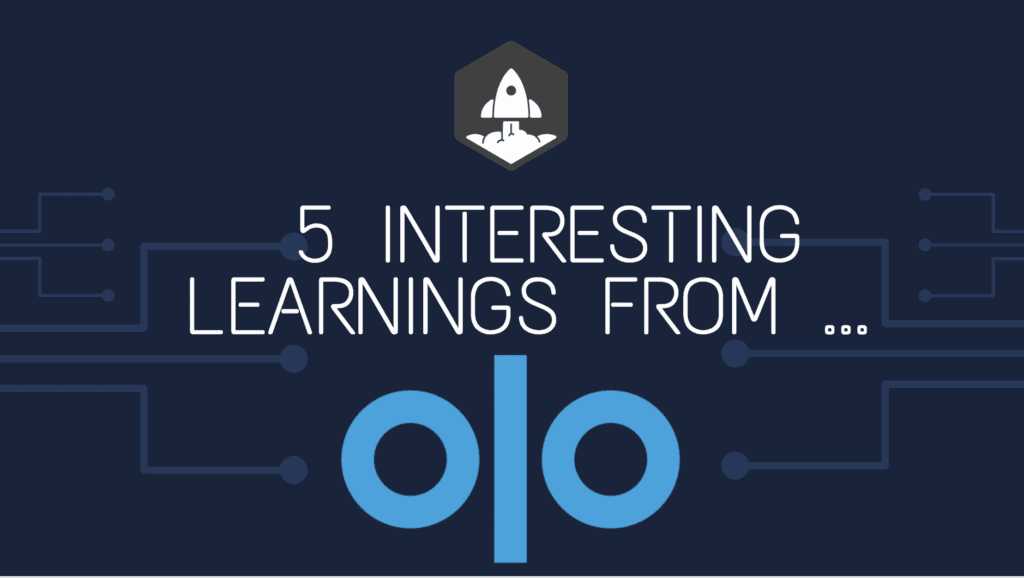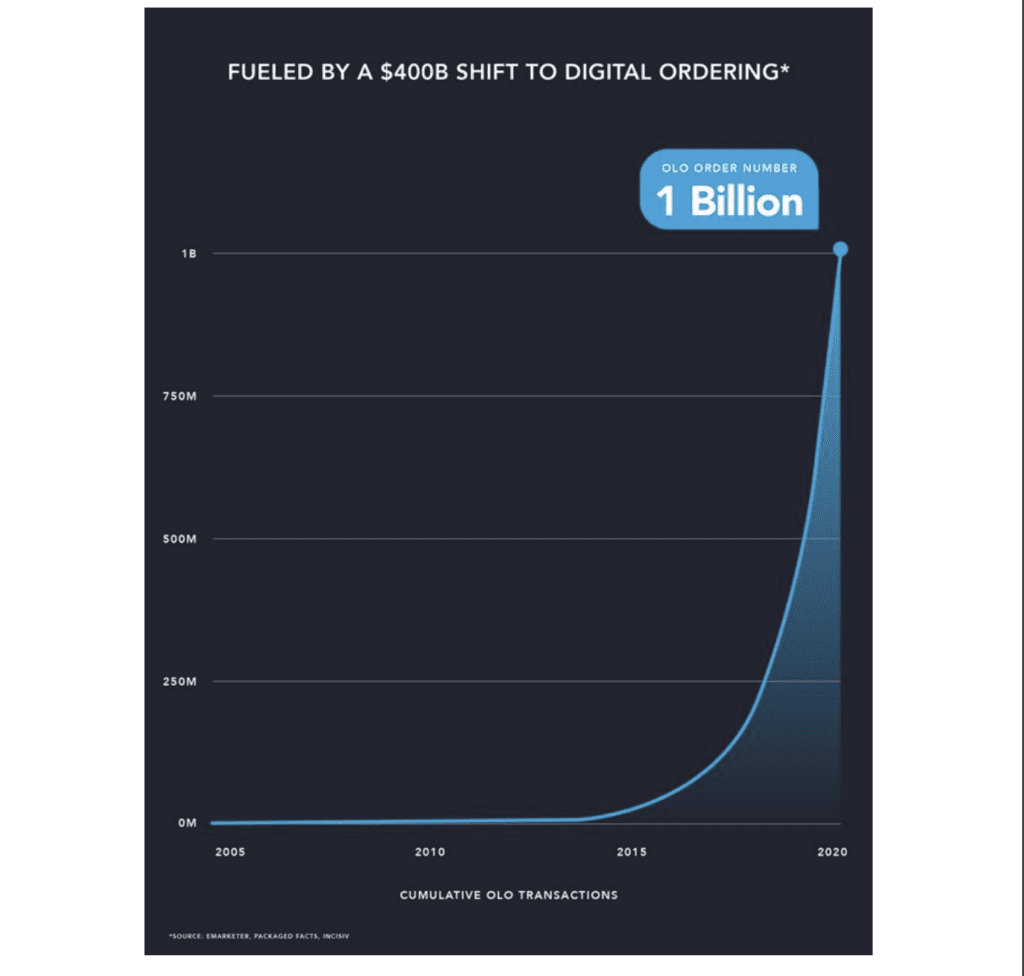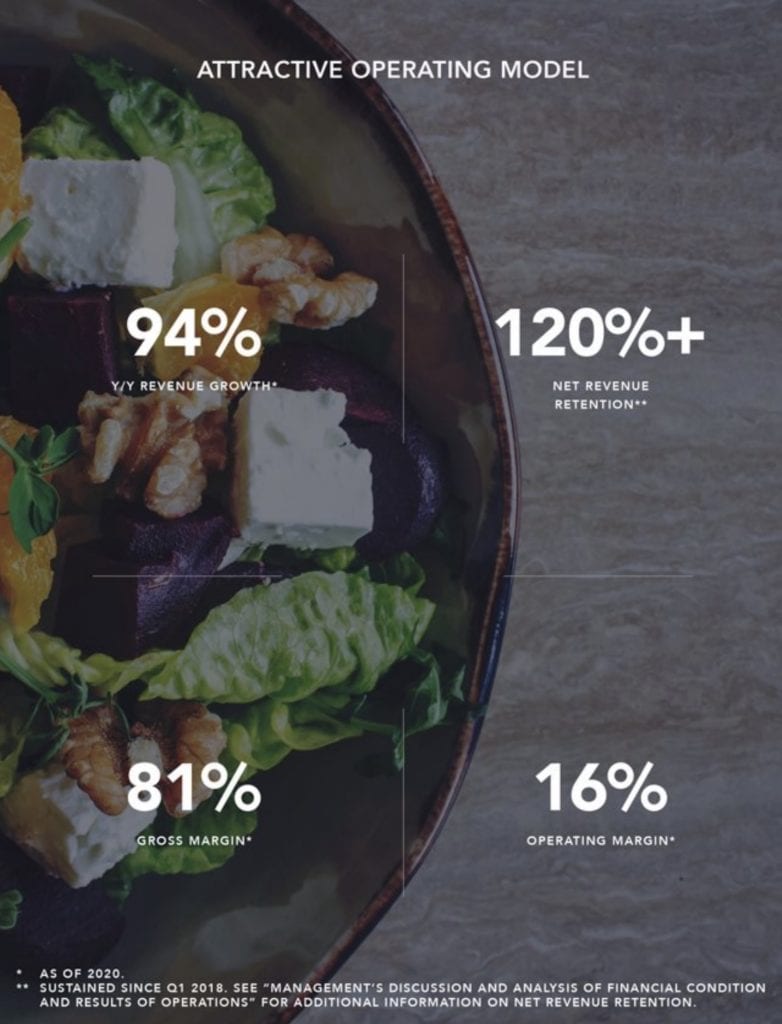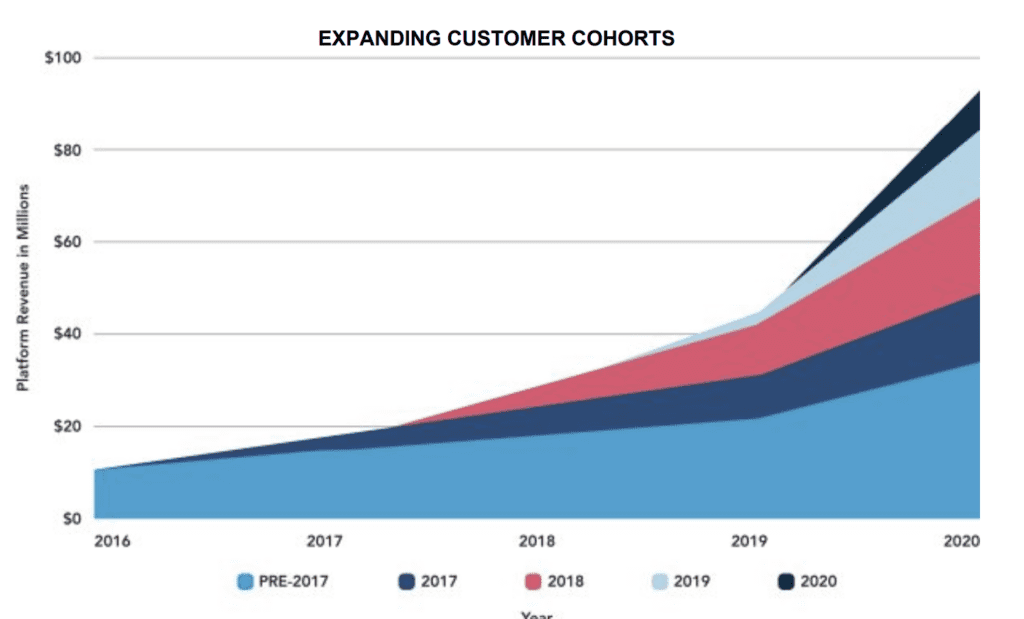
Olo is a relatively quiet recent IPO of an interesting company that competes with Toast and others in restaurant SaaS platform business that took a while to take off … and then like UiPath, albeit on a smaller scale, boomed:

Olo is relatively small to IPO — at least $130m ARR — but its explosive 94% growth after Covid let it IPO on its way to a $3.5 Billion valuation today. A breathtaking 30x+ its ARR.

5 Interesting Learnings:
#1. Growth fueled by the addition of transactional revenue, not SaaS revenues. Olo’s explosive growth in the past 24 months prior to IPO wasn’t fueled so much by its SaaS revenue, but by transaction revenue as part of orders. Shopify’s recent massive growth was also fueled by merchant services revenue (payments) more than just SaaS.
As late as 2018, 93% of Olo’s revenue was pure SaaS. In 2020, transactional revenue had grown to 43%, and SaaS was merely 57% of revenue.
If Olo had stayed “just SaaS”, the success story would have been much, much more modest. Olo calls this “transactional SaaS”.
#2. Only burned $24m to get to $100m+ in revenues — but it took a long time as a result. Prior to IPO, Olo had raised $100m, but it still had $76m of cash on hand — so net of revenue, it only burned $24m to get to $100m+ in ARR. It got started in 2005 with a $500k seed round. But it was started so long ago that it was a different time. And growth was very modest in the early years. The founder Noah Glass owned 10% at IPO.
#3. Growth remains strong, but not as crazy strong post-Covid. Just as Zoom has projected 40%+ growth post-Covid, Olo also is still experiencing strong growth, but not close to the 100%+ YoY it had during peak Covid quarters.
#4. More valuable products and modules = more revenue. We’ve seen this with Box and others as well. 71% of Olo’s customers now use all 3 of its modules, up from 44% in 2019. It added its Dispatch and Rails modules just in 2015 and 2017, and added transactional pricing to its Ordering module in 2016. This has been key to the accelerated growth.

#5. DoorDash is 19% of its revenue — up from 2.6% in 2018. A bona fide risk, especially since DoorDash now also competes. But apparently, public market investors are OK with it.
And a few bonus notes:
#6. Services are a bit more than break-even. Olo doesn’t do a ton of professional services, at just 5% of its revenue. But what it does do is profitable, albeit modestly, with a 30% margin. A rule to only do services when they are profitable is a good one for many in the enterprise.
#7. Top 10 customers are 21% of their revenues — but coming down. Olo focuses on chains and in essence the enterprise segment of restaurants with ~400 larger customers, and as a result, customers are concentrated. But it is coming down. Its top 10 customers were 35% (!) of its revenues in 2019, but only 21% today.
#8. Customers sign 3 year contracts, with 99% enterprise customer retention. 3 year contracts do help retain them! But still, 99% customer retention is impressive.

#9. Modest sales & marketing expense of just 9%, and just 134 employees in sales, marketing, and customer success. This is low, and in part is because of the somewhat organic expansion of selling to chains and franchisees. As a result, Olo has substantial operating income and free cash flow (20%!) even at just $130m in ARR.
#10. Requires customers to be exclusive on their direct digital ordering services. This blocks out the competition, at least a segment of it.

